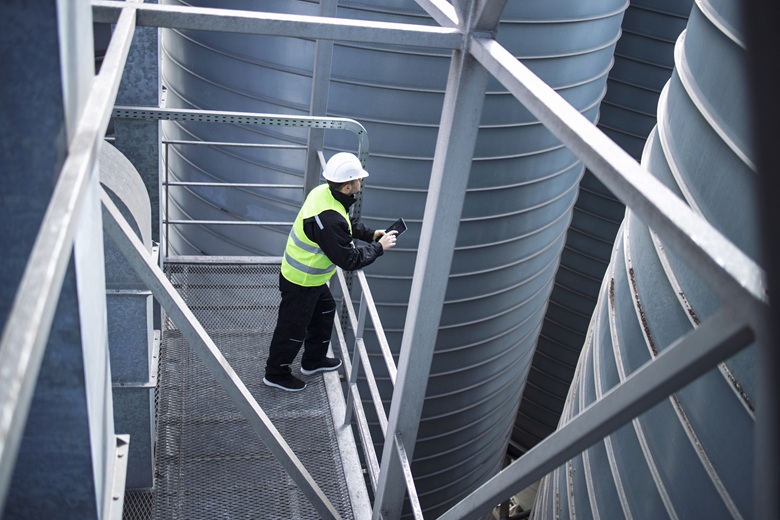
Industrial operations demand water for a variety of purposes, including cooling systems, process-water, or storage. Even the purest water will deposit an unwanted residue sooner or later. Unless cleaned periodically, water storage tanks will become hosts to bacteria, scale, and other contaminants that affect system efficiency and water quality.
If your facility depends on water storage tanks, regular maintenance is not optional; it is vital to safety, efficiency, and compliance.” The good news is: It doesn’t have to be complicated. Following best practices will allow water tank cleaning to become a minimum effort and maximum benefit part of your maintenance schedule.
Why Clean Water Tanks Matter
Initially, one might think water storage needs almost no maintenance. After all, it’s just water. Yet, the truth remains that some trace minerals, few biofilm-forming organisms, and microparticles get into treated waters and settle down at the base of storage tanks over time.
Once these are allowed to accumulate, they can cause:
- Bacterial growth due to water stagnation, including infectious pathogens
- Mineral scale buildup that hinders internal surfaces and other connected systems
- Reduction in volumes since sediments are occupying a share that usable water must have taken
- Sensor inaccuracies, thus making level tracking or fault detections harder
- Poor water quality downstream that affects equipments or applications
In fact, the proper cleaning of tanks shall guarantee water quality that is safe, usable, and consistent, coursing through score facilities where it is considered mission-critical.
What Accumulates in Water Storage Tanks?
Water may look clean on the surface, but even filtered or chemically treated sources can carry:
- Calcium and magnesium that create hard mineral deposits over time
- Iron and manganese that leave discoloration and slime
- Bacteria and biofilm that thrive in low-flow conditions
- Sediment and debris from pipe corrosion or external sources
These elements collect in layers and reduce water clarity, contribute to odor, and affect taste or chemical properties—depending on the application.
How Cleaning Helps Prevent Long-Term Issues
Letting buildup linger doesn’t just affect water quality—it shortens the lifespan of your equipment. Valves, pumps, and treatment systems all have to work harder when water is dirty, increasing wear and utility costs. Cleaning your water tank regularly supports:
- Longer system life: Prevents early failure of connected components
- Accurate monitoring: Clean sensors give reliable data
- Reduced contamination risk: Minimizes exposure to harmful organisms or chemicals
- Better energy use: Clean water flows more efficiently through the system
- Improved safety: Reduces the chance of waterborne illness or code violations
Professional cleaning also gives maintenance crews a chance to inspect the tank for cracks, leaks, or signs of corrosion—before those issues become disruptive.
What the Cleaning Process Looks Like
Industrial cleaning for water tanks may vary depending on each tank’s type and size but essentially operates in accordance with the following basic sequence:
- Drainage: The tank is emptied to expose interior surfaces and remove stagnant water.
- Ventilation: The gases are vented out and tested for random air composition, if and when entry into the tank is necessary.
- Manual or automated cleaning: A high-power washer is used so the inside of the tank is scrubbed with the help of rotary nozzles or certain chemical agents.
- Sediment removal: All sludge and debris are vacuumed or extracted. Sometimes, autonomous systems may do the same.
- Disinfection: The tank might be supplied with a disinfectant to inhibit microbial growth.
- Inspection and refilling: After the cleaning, the tank is inspected, refilled, and returned for service.
Because the processes involve confined spaces and slippery surfaces, the cleaning must be done by trained professionals belaying the use of all appropriate equipment and safety protocols.
For more on the benefits and best practices, this guide to industrial water tank cleaning covers essential information for facilities looking to improve water system performance.
When and How Often to Clean
The frequency of cleaning depends on several factors, including water source, tank size, environmental conditions, and what the water is used for.
As a general rule:
- Annual cleanings are recommended for most systems.
- Twice-yearly cleanings may be necessary in warm, humid climates.
- More frequent service is essential if tanks show signs of discoloration, bad odor, or fluctuating readings.
Any time a tank is taken offline for maintenance or repurposed for a new fluid, cleaning should be part of the transition.
Making Tank Hygiene a Habit
Treatment of tank cleaning as preventive maintenance will simplify keeping tanks clean. And thus, to simplify scheduling of cleaning, service must be included in the nonscheduled maintenance plan, with records kept regarding cleanings, inspections, and findings.
If water flow or quality changes or if an unusual smell occurs, maybe it is time to bring forward your cleaning date. Cleaning schedules can be suggested by trained technicians, depending on water usage and equipment types in a given facility.
A Small Change with Big Impact
Water tank cleanliness not only protects your system, which means your people, processes, and reputation. Whether you are handling an industrial plant, commercial building, or municipal utility, maintaining clean tanks will certainly get your operations running efficiently and in compliance.
Get that sediment and sludge that are going to make themselves known out of the way. Regular attention and the right cleaning procedure will enable the tanks to back clean and safe water, just like they should have since the beginning.
